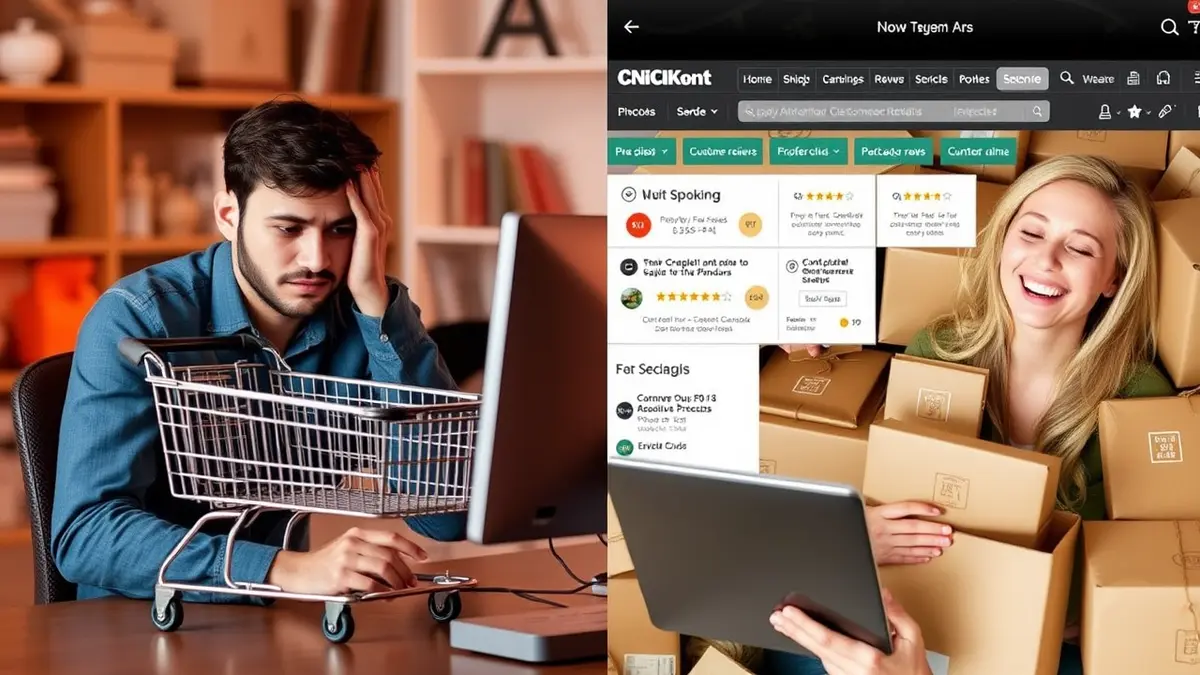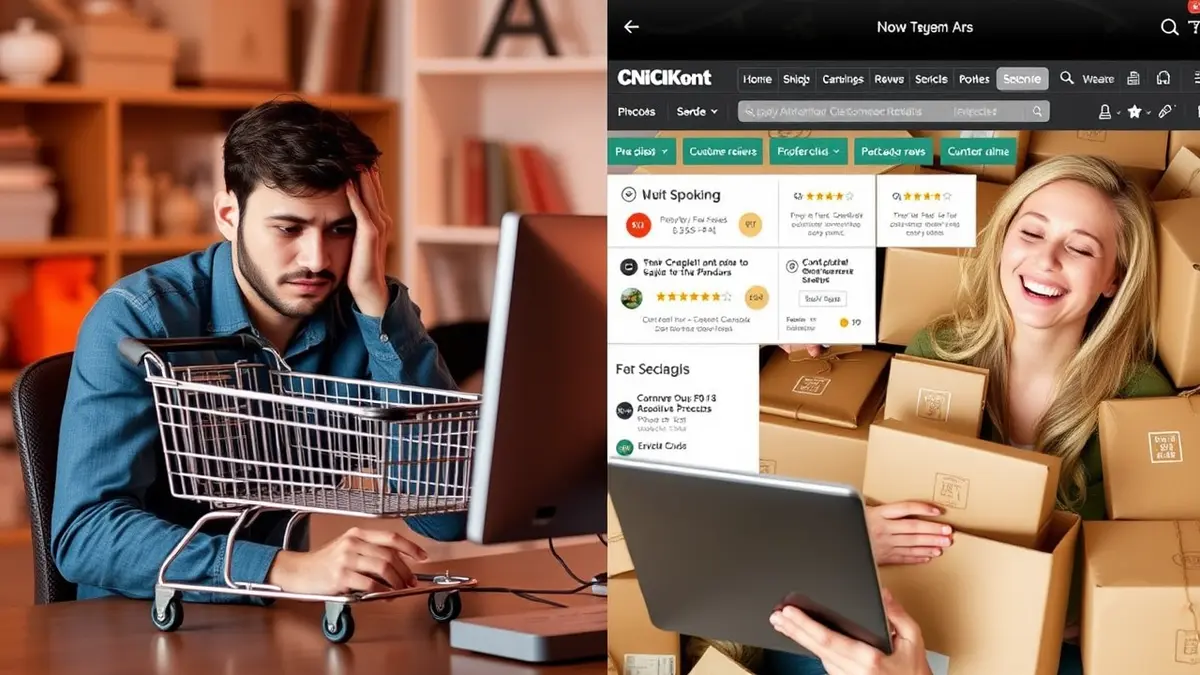How to Snag Online Shopping Offers That Actually Deliver Savings
Tired of online shopping deals that vanish at checkout or turn out to be duds? This guide cuts through the noise and equips you with actionable strategies to find real, lasting savings. Stop wasting time on bogus discounts and start maximizing your online shopping budget!
What You'll Discover
- Understanding the Psychology of Online Offers
- Advanced Deal-Hunting Tools & Techniques
- Decoding Deceptive Discounts: Red Flags to Watch Out For
- The Power of Price Tracking and Alerts
- Mastering Coupon Codes: Beyond the Basics
- Loyalty Programs and Rewards: Are They Worth It?
- Timing is Everything: Strategic Shopping Seasons
- Negotiation Tactics for Online Retailers
- Protecting Yourself from Scams and Fake Offers
- The Future of Online Deals: What's Next?
Understanding the Psychology of Online Offers
Online retailers are masters of persuasion. They understand how to make you want to buy, often blurring the line between need and impulse. Limited-time offers, flash sales, and "only X left in stock!" banners are all designed to trigger your fear of missing out (FOMO). Clever, right? They play on psychological triggers, like scarcity and urgency, to encourage quick purchases.
Before you click that "add to cart" button, take a breath. Ask yourself: Do I really need this? Or am I just caught up in the hype? That's the key to saving money, folks.
Think of it like this: imagine walking into a store with flashing lights and blaring music versus a quiet boutique. Which environment is more likely to make you buy something you don't need? Online shopping is often the former – a sensory overload designed to loosen your grip on your wallet. It's essential to stay mindful of these tactics.
Advanced Deal-Hunting Tools & Techniques
Beyond simple Google searches, a plethora of tools can help you find better deals. Price comparison websites are a good starting point, but don't stop there. Explore browser extensions that automatically find and apply coupon codes. Wishmerge, for instance, is designed to deliver daily handpicked deals and trending products; making the search even easier. Bookmark it!
But, let's get a bit more advanced, shall we?
- Reverse Image Search: Find the same product from different retailers. Upload an image to Google Images or TinEye to see where else it's sold, potentially at a lower price.
- CamelCamelCamel (for Amazon): Tracks price history on Amazon so you can see if a "deal" is actually a good deal or just inflated from a previously lower price.
- Honey (browser extension): Automatically finds and applies coupon codes at checkout. (Though, sometimes those codes are expired; gotta test 'em!).
- InvisibleHand (browser extension): Notifies you if a product you're viewing is available for a lower price at another retailer.
My grandmother, God bless her, still prints out coupons from the Sunday paper, and tries to use expired ones. She's missing out on the ease of online tools.
Decoding Deceptive Discounts: Red Flags to Watch Out For
Not all offers are created equal. Some are downright deceptive. "Was/Now" pricing, where the "Was" price is artificially inflated, is a common tactic. Watch out for retailers that constantly have "sales," as this suggests their regular prices are too high to begin with. The use of inflated "original" prices is common and should be a red flag.
And then there are those daily deal sites, that promise huge discounts. But What's the Catch with Daily Deals That Seem Too Good? It's crucial to read the fine print.
Here are some warning signs of a questionable deal:
- Obscure Brands: Deals on brands you've never heard of could be low-quality or even counterfeit.
- Limited Stock Scams: Retailers claiming extremely limited stock ("Only 1 left!") to pressure you into buying. Do some research before buying!
- Missing Contact Information: Lack of a physical address or customer service number is a major red flag.
- Unrealistic Discounts: If a deal seems too good to be true, it probably is.
My sticky keyboard from that coffee spill during our launch reminds me of navigating sketchy deals – it's messy and leaves you feeling yucky.
The Power of Price Tracking and Alerts
Waiting for a price to drop is an art. Fortunately, you don't have to constantly monitor websites manually. Price tracking tools do the work for you. Set a target price, and you'll receive an alert when the item hits that mark.
Several websites and browser extensions offer price tracking features:
- Google Shopping: Tracks prices on products you've searched for and sends email alerts when they drop.
- CamelCamelCamel: As mentioned earlier, this is excellent for Amazon price tracking.
- Keepa (browser extension): Another popular option for tracking Amazon prices, with detailed price history charts.
- Price.com: Aggregates prices from multiple retailers and offers price alerts.
Setting up these alerts is a breeze. I remember when my colleague was trying to snag a new 4K TV. He set up alerts on three different sites and scored a deal that saved him over $200. Patience pays off!
Mastering Coupon Codes: Beyond the Basics
Coupon codes are the bread and butter of online savings. But finding valid codes can be a challenge. Don't rely solely on coupon websites; many of those codes are expired or invalid. Instead, try these techniques:
- Retailer Newsletters: Sign up for email newsletters from your favorite stores. Retailers often send exclusive coupon codes to their subscribers.
- Social Media: Follow retailers on social media. They sometimes post special offers and discounts for their followers.
- Live Chat: Ask customer service representatives if they have any current coupon codes.
- Abandoned Cart Trick: Add items to your cart and then leave the website. Some retailers will send you a coupon code to entice you to complete the purchase. (Honestly? This never worked for me until I tried it with a new email address!).
And remember, How to Maximize Coupon Usage Boost Savings Fast – stack those savings where possible!
Loyalty Programs and Rewards: Are They Worth It?
Many retailers offer loyalty programs that reward you for your business. These programs often include perks such as free shipping, exclusive discounts, and early access to sales. But are they really worth it?
It depends on how frequently you shop at that particular retailer. If you're a regular customer, a loyalty program can definitely pay off. However, if you only shop there occasionally, the benefits may not outweigh the effort of signing up and managing another account. Some programs even have annual fees, so be sure to factor that into your decision. A TechCrunch piece last spring hinted that retailers are leaning more into personalized loyalty offers.
Consider these points when evaluating loyalty programs:
- Earning Rates: How much do you have to spend to earn a certain number of points or rewards?
- Redemption Options: What can you redeem your points for? Are the rewards things you actually want or need?
- Expiration Dates: Do your points or rewards expire?
- Fees: Are there any annual fees or other costs associated with the program?
Timing is Everything: Strategic Shopping Seasons
Knowing when to shop is just as important as knowing where to shop. Certain times of the year offer significantly better deals than others. Black Friday and Cyber Monday are the obvious examples, but there are other strategic shopping seasons to consider.
- January: White sales (linens, towels), post-holiday clearance.
- February: Presidents' Day sales (appliances, furniture).
- March: St. Patrick's Day sales (green apparel, themed items).
- July: Amazon Prime Day, back-to-school sales.
- September: Labor Day sales (clothing, home goods).
- December: After-Christmas sales (decorations, gifts).
But don't limit yourself to these major holidays. Many retailers offer mid-season sales and flash sales throughout the year. Again, signing up for email newsletters and following retailers on social media can help you stay informed about these opportunities.
Negotiation Tactics for Online Retailers
Believe it or not, you can sometimes negotiate lower prices online. It requires a bit of finesse, but it can be done. How to Negotiate Lower Prices Online in 30 Minutes, you ask?
Here are a few tactics to try:
- Live Chat: Contact customer service via live chat and politely ask if they can offer any discounts or promotions.
- Price Matching: Many retailers will match the price of a competitor.
- Bundling: Ask if you can get a discount for purchasing multiple items together.
- Be Polite: Always be courteous and respectful, even if you're frustrated.
Protecting Yourself from Scams and Fake Offers
The internet is rife with scams and fake offers. It's important to be vigilant and protect yourself from being ripped off.
Here are some tips for staying safe:
- Research the Retailer: Before making a purchase, check the retailer's reputation and read online reviews.
- Look for the Lock Icon: Make sure the website uses a secure connection (HTTPS). The lock icon in the address bar indicates a secure connection.
- Use Strong Passwords: Use strong, unique passwords for all of your online accounts.
- Be Wary of Phishing Emails: Don't click on links or open attachments in suspicious emails.
- Check the Return Policy: Make sure the retailer has a clear and fair return policy.
- Use a Secure Payment Method: Pay with a credit card or PayPal, which offer buyer protection.
The Future of Online Deals: What's Next?
The world of online deals is constantly evolving. Expect to see even more personalized offers, AI-powered deal-finding tools, and innovative shopping experiences in the years to come. The increasing use of AI to personalize offers and predict consumer behavior is particularly interesting. Will we see a day when AI negotiates prices on our behalf?
The rise of augmented reality (AR) and virtual reality (VR) could also transform the way we shop online. Imagine being able to virtually "try on" clothes or "place" furniture in your home before making a purchase. That's all in the realm of possibility.
Anyway, stay informed, be vigilant, and never stop hunting for those savings!






